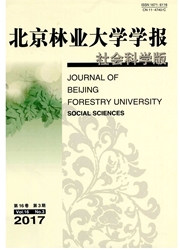

 中文摘要:
中文摘要:
以南京紫金山国家森林公园为例,探究森林公园地理位置由城郊入城后所受的干扰形式、强度、频率的变化。结果表明频繁的休闲活动、不合理开发、快速交通网络的包围、分割及偷猎等人为干扰造成紫金山环境承载压力加大、水土流失、白色污染、交通拥堵、生物多样性降低、声景观协调度减弱。规划将紫金山划分为生态保育区、核心敏感区、智慧旅游区和人文休闲区,通过优化林分结构、保护野生动物、强化防火监查等生态调整,并利用信息技术控制游人量及进山车辆,改善旅游体验,完善便民服务体系,监测林业资源等智慧管控措施优化空间分区管理方式,构建生态智慧型复合发展模式,为森林公园经营管理提供重要指导。
 英文摘要:
英文摘要:
Taking Nanjing Zijin Mountain National Forest Park as a case, this paper studies the changes of disturbances in terms of form, intensity and frequency suffered by forest parks after they are transitioned from suburban to downtown ones. The results show that human disturbance including frequent leisure activities, unreasonable development, surrounding of rapid transportation network, segmentation and poaching resulted in the environmental pressure in Zijin Mountain, which led to soil erosion, white pollution, traffic congestion, reduction of biodiversity and the dropping of coordination degree of acoustic landscape. In this research, Zijin Mountain was planned to be divided into ecological conservation area, core sensitive area, intelligent tourism area and cultural leisure area. Through ecological adjustments, such as optimizing the structure of forest stand, protecting wildlife and strengthening fire prevention inspection and by optimizing space partition management mode via the enhancement of intelligence control measures, the control of visitors and vehicles, the improvement of tourism experience, the perfection of convenience service system and the monitor of forestry resources with information technology, this research aims to build an ecologically intelligent composite development model, and provide important guidance for the forest park management.
 同期刊论文项目
同期刊论文项目
 同项目期刊论文
同项目期刊论文
 Interpretation of forest resources at the Individual tree level at Purple Mountain, Nanjing City, Ch
Interpretation of forest resources at the Individual tree level at Purple Mountain, Nanjing City, Ch 期刊信息
期刊信息
